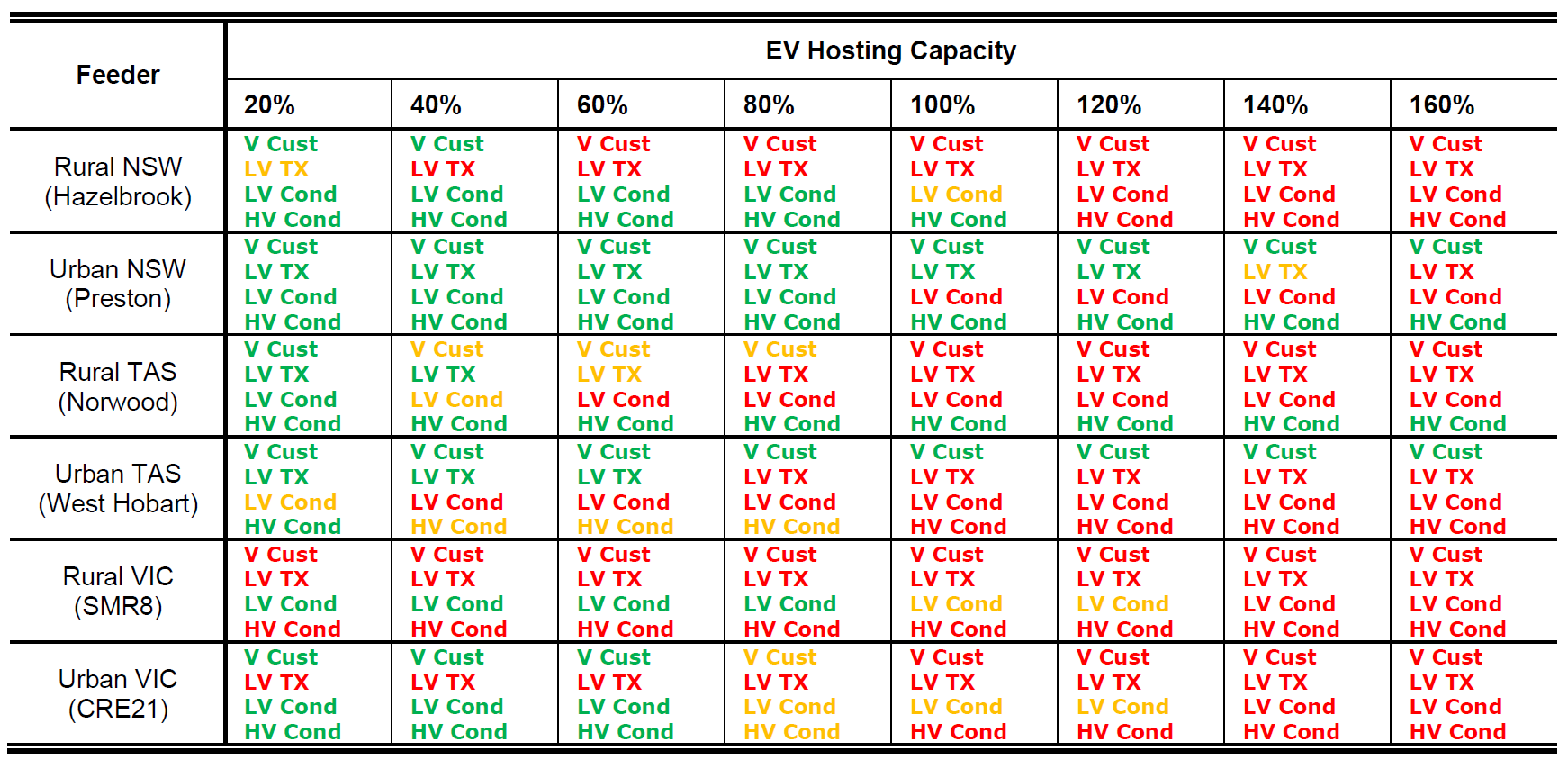New Report: Impacts of EVs on Australian Urban and Rural Grids
The increasing adoption of electric vehicles (EVs) poses significant technical and economic challenges to the power grid, particularly on the very infrastructure they are connected to – the electricity distribution network. The latest report from the EV Integration Project presents the results of a detailed EV hosting capacity assessment done on urban and rural networks in Tasmania, New South Wales, and Victoria.
We have designed our distribution networks to cope with our peak demand. Depending on the State or Territory in Australia, the design value can vary from 3 to 7 kW per house (single phase) which accounts for diversity (we all use electricity at different times) and demographics (larger houses or colder places without access to gas consume more). Although our networks have been engineered to withstand demand growth, this does not include EVs.
The trend around the world is for EVs charged at home to use the fast level 2 chargers (around 7kW of demand). While all EVs will not be charged at the same time, they clearly are a concern for distribution companies as the extra demand could easily exceed what the infrastructure has been designed for. Therefore, we need to understand the extent to which our networks can host EVs.
 With support from Energy Networks Australia (ENA), the Centre for New Energy Technologies (C4NET), and the Australian Power Institute (API), the Power and Energy Group have been examining this EV ‘hosting capacity' problem. The team, led by Prof. Nando Ochoa and Prof. Pierluigi Mancarella of the University’s Department of Electrical and Electronic Engineering, have developed high-fidelity distribution network models to assess the impacts of unmanaged EVs.
With support from Energy Networks Australia (ENA), the Centre for New Energy Technologies (C4NET), and the Australian Power Institute (API), the Power and Energy Group have been examining this EV ‘hosting capacity' problem. The team, led by Prof. Nando Ochoa and Prof. Pierluigi Mancarella of the University’s Department of Electrical and Electronic Engineering, have developed high-fidelity distribution network models to assess the impacts of unmanaged EVs.
The latest report on this project, EV Integration, presents the modelling considerations and results of a highly-granular, detailed EV hosting capacity assessment done on selected urban and rural networks in Tasmania, New South Wales, and Victoria. This involves fully modelled HV (22kV and 11kV) feeders and pseudo low voltage (0.4kV) networks to capture the effects close to end-users as well as 1-min resolution time-series analyses and growing penetrations of unmanaged EVs.
Report "Milestone 6: Network Modelling and EV Impact Assessment"
This report finds that the investigated rural feeders are the most constrained with up to 40% of residential customers with an EV. The larger number and smaller size of LV transformers typically used in rural feeders result in many congested transformers with relatively low EV penetrations. Furthermore, the length of the rural feeders and resulting in higher impedances lead to lower voltages with relatively low EV penetrations. On the contrary, the investigated urban feeders can have larger EV penetrations up to 80% of residential customers with an EV. The first limiting factor was asset congestion (LV conductors, HV conductors or LV distribution transformers). While voltage issues are not significant for urban feeders until high EV penetrations, the high density of residential customers inevitably leads to a much larger peak demand even with modest EV penetrations, resulting in asset congestion.
The table below summarises the network impacts from unmanaged residential EV charging. Green indicates the parameter (e.g., customer voltages, LV transformer utilisation, etc.) is within limits, yellow indicates marginally exceeding limits whilst red indicates the limit was significantly exceeded.

If you wish to find out more, please visit the EV Integration Project website which presents all project reports to date, webinars and links to our partners. Prof. Nando Ochoa and Dr. William Nacmanson also welcome any enquiries.
